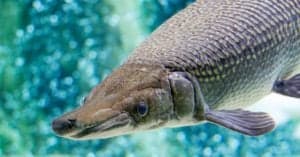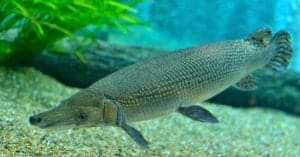Alligator gars get their unique names from their uncanny resemblance to the American alligator. They have wide heads with enough space for two rows of their fang-like teeth. Alligator gars are large, often with brown, olive, or gray scales. However, like all gars, the alligator gar does not have smooth and overlapping scales typical of fishes.
Instead, they have hard, boney, and interlocking scales, adding to their alligator image. These aquatic monsters are found in many lakes, rivers, and reservoirs across southern US states and, of course, the Mississippi River.

Alligator Gars In The Mississippi
Alligator gars are one of the oldest fish in the Mississippi. Classified under the ginglymodi natural group, which first appeared over 240 million years ago, the gar fish is among the largest freshwater fish in North America. Although alligator gars are just one of the 120 species found in the Mississippi’s depths, they are undoubtedly one of the oldest and weirdest.
How Large Do Alligator Gars Get?
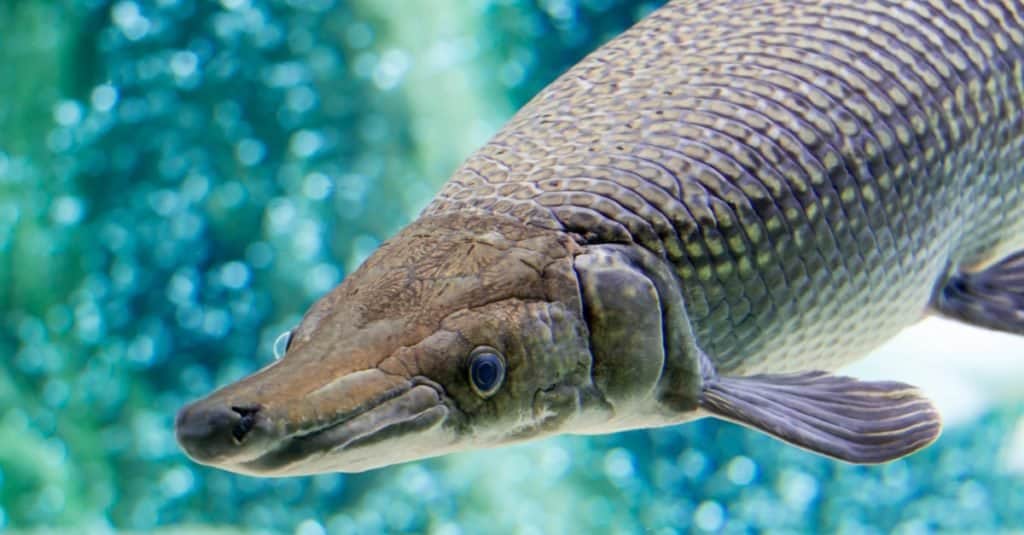
On average, alligator gars measure 6 feet and weigh over a hundred pounds!
©Bill Roque/Shutterstock.com
Alligator gars are shaped like torpedos. On average, they measure 6 feet and weigh over a hundred pounds! They are the largest gar species and one of the largest species of fish found on the North American continent. Alligator gars are freshwater inhabitants and are considered primitive fishes.
What is the Largest Alligator Gar Ever Caught in the Mississippi?

On the 14th of February, 2011, Kenny Williams, a Vicksburg fisherman, was fishing the Oxbow Lakes of the Mississippi when his nets caught something big. He pulled it up, expecting buffalo fish but instead, he’d caught a large alligator gar. It took close to thirty minutes for him to drag the fish on board.
William’s catch was 8 feet, 5 1/4 inches long, and 327 pounds! He donated the large gar to the Mississippi Museum of Natural Science in Jackson, where it is on display. Wildlife officials estimated this gar to be between 50 and 70 years old, although some approximated that the gar could have been up to 94 years old. The average lifespan of an Alligator gar is generally 26 to 50 years of age.
Before then, an alligator gar caught in Texas held the record. The specimen was caught in 1951 and weighed 289 pounds. After this, a Louisiana alligator gar caught in 2002 came really close at 215 pounds. However, it was caught with a bow and was thus disqualified. Another impressive catch was a 179-pound specimen caught in 1997. This makes the Mississippi catch the largest in the world.
Impressive Facts About Alligator Gars
Apart from its size, there are several other facts that make the alligator gar a unique species. Here are eight impressive features about alligator gars.
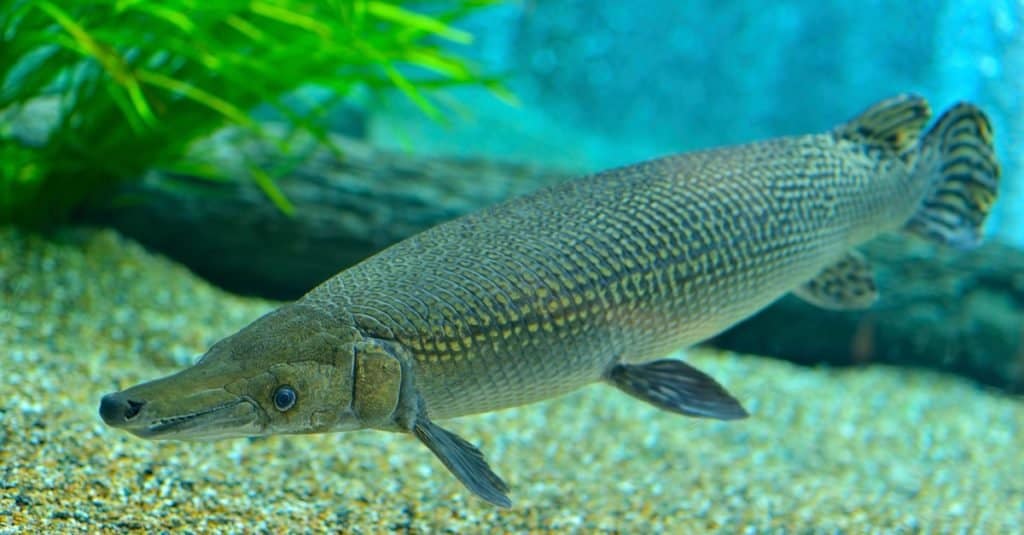
The alligator gar was once slaughtered as a nuisance, but is now protected.
©tristan tan/Shutterstock.com
Trash fish
Alligator gars were once unfairly considered trash fish. The state and federal authorities tagged them as nuisances because they preyed on gamefish. Fishermen slaughtered them in mass numbers, believing they were doing good and saving the ecosystem.
Luckily, in 1992, PBS affiliate KUHT in Houston, Texas, presented a documentary titled “The Alligator Gar: Predator or Prey?” This program greatly helped to change public perception of this species and earn them state protection. It took another few years for other states to begin restoration processes.
Top Predators and Opportunistic Feeders
Alligator gars are opportunistic feeders and scavengers that take advantage of available food. They eat whatever they encounter and aren’t very picky animals. They are also top predators as they have few natural predators, largely because of their large sizes and tough scales. Ironically, one of the few animals known to occasionally attack these fishes are alligators.
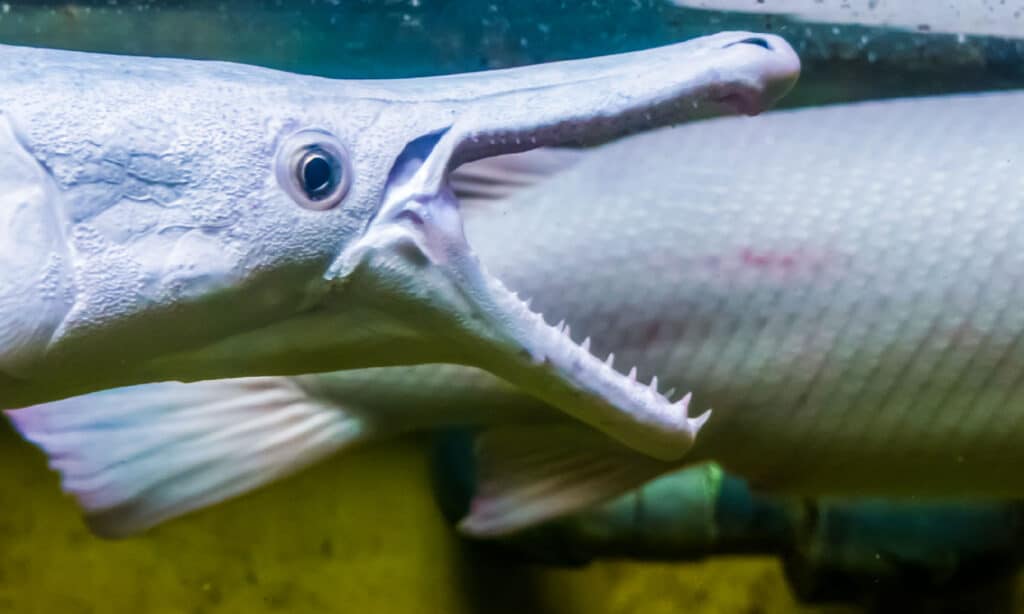
Alligator gars are not picky eaters.
©Charlotte Bleijenberg/Shutterstock.com
Ambush Masters
Alligator gars are often docile and slow to move, giving off a sluggish aura that helps to disarm their prey. Once the prey gets close enough, they are ambushed. Alligator gars lunge forward with intense force, latch on to their prey, and do not let go. It is often easy for them to be underestimated or even go unnoticed, especially considering their coloring.
Some other animals that practice this hunting style are copperhead snakes and trapdoor spiders. However, like all ambush hunters, alligator gars attack with brutal force. They are mainly piscivores, meaning that fish makes up a large percentage of their diet.
Harmless to Humans
One previously believed myth about these fishes is that they attack humans. This was an easy myth to sell, considering their sizes and armored bodies. However, it is false. There isn’t a single record of an alligator gar attack on a human. In addition, there isn’t any record of any human death caused by an alligator gar attack. This myth was one of the greater contributors to the “trash fish” image.
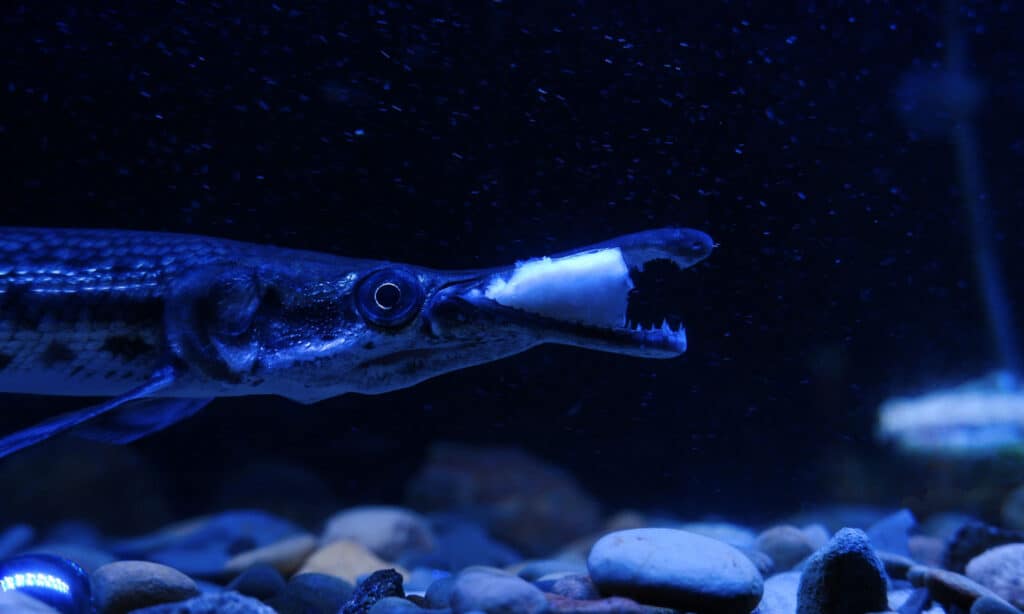
The eggs of an alligator gar contain ichthyotoxin which is poisonous to humans if ingested.
©Wilson Anyie/Shutterstock.com
Poisonous To Humans
Alligator gars are not entirely harmless to humans. Their eggs contain toxins that can poison humans if ingested. The toxins are defensive mechanisms to keep animals such as crustaceans from eating their eggs. Their eggs contain ichthyotoxin, a protein that causes vomiting, headaches, nausea, diarrhea, low blood pressure, and dizziness. However, alligator gars are safe to eat and are often eaten.
Newborns Grow Quickly
Newborn alligator gars are born in springtime and grow quickly, reaching 5 inches in length after a month. By the winter, six to eight months later, they are often as long as 30 inches. However, this growth sprout doesn’t last. It can take them 10 years to reach their full size and gain the ability to reproduce.
Alligator Gars Were First Discovered in 1803
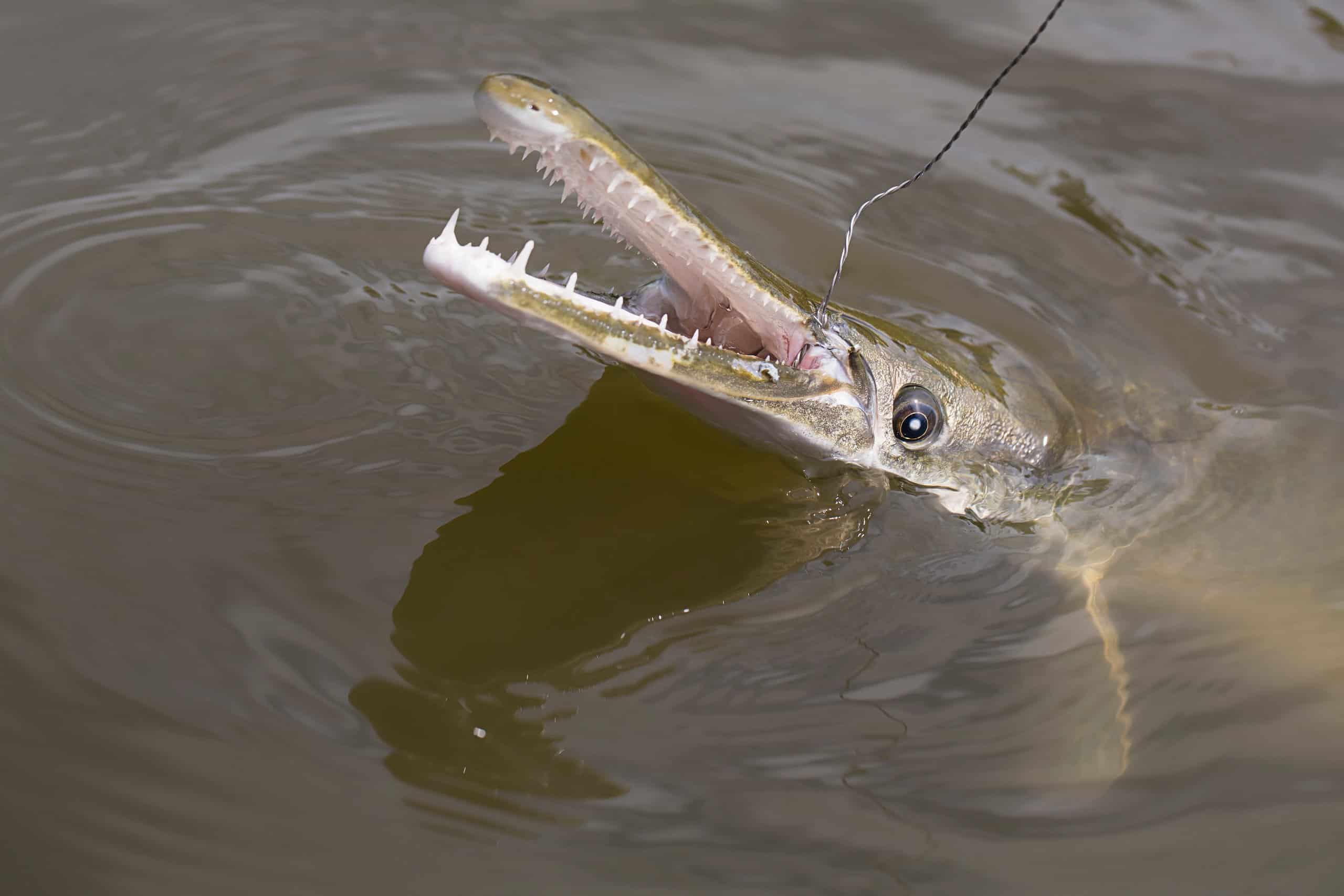
Alligator gars have fang-like teeth similar to those of a true alligator.
©Jennifer White Maxwell/Shutterstock.com
Bernard Germain de Lacépède, a French naturalist, discovered alligator gars in 1803. Lacépède initially named the species Lepisosteus spatula, but E.O. Wiley changed it to Atractosteus spatula in 1976. Wiley’s classification better recognized the two distinct taxa of gars present in the species.
Native Americans Used Alligator Gars For Battle
Native Americans found a way to utilize the alligator gars for battle; they used their scales for arrows. Alligator gars’ scales are almost perfect for arrowheads due to their shape and size.
The photo featured at the top of this post is © Danny Ye/Shutterstock.com
Thank you for reading! Have some feedback for us? Contact the AZ Animals editorial team.




